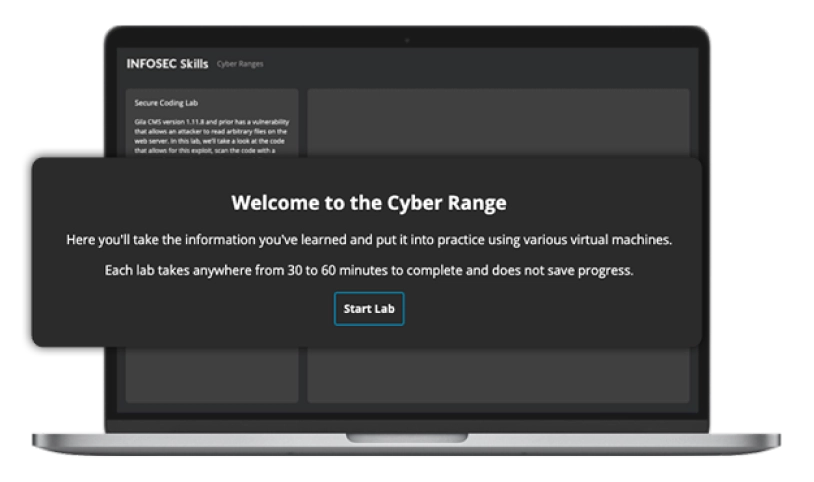
Python for Cybersecurity Learning Path
14 hours, 29 minutes
Quick facts
About this learning path
-
courses
100% online
-
Duration
14 hours, 29 minutes
-
Assessment
questions
About Python for Cybersecurity
If you want to learn Python for cybersecurity — this learning path is for you. Take an application-led look into the Python-powered world of cybersecurity. Python is one of the world's most popular and far-reaching programming languages due to its high usability and large collection of libraries.
Python's prowess in automating tasks can be a key weapon across the entire lifecycle of a cyberattack, assisting both those safeguarding and those seeking to breach. Along this route, we'll witness these applications firsthand and explore how Python fuels efficiency and enhances the effectiveness of cybersecurity experts.
Who this learning path is for
- Cybersecurity beginners: Boost your knowledge and skills with a widely used programming language.
- Current cybersecurity practitioners: Expand your programming toolkit and improve your proficiency in roles such as SOC Analyst or Penetration Tester
- Secure Coders: Transition into the cybersecurity field by increasing your familiarity with Python.
- Security Managers: Build your Python for cybersecurity specialization skills and learn how Python applications can improve your team’s efficiency
- Anyone with interest: Learn how Python can be used in the realm of cybersecurity for task automation, defending against or launching cyberattacks and how to create Python scripts to solve real-world use cases in an interactive learning environment.
By the end of this learning path, you will
- Understand how Python can be applied to cybersecurity
- Be able to develop Python applications to solve cybersecurity problems
- Be able to create Python scripts to solve real-world use cases
- Develop custom Python scripts to automate cybersecurity tasks
- Apply Python to meet objectives throughout the cybersecurity attack life cycle
- Automate common cyberattack and defense activities with Python
Syllabus
Secure Coding - Python
Lab - 00:30:00
Python for Cybersecurity Skill Assessment
Assessment - 102 questions
Introduction to Python for cybersecurity
Course - 00:26:00
Python for PRE-ATT&CK
Course - 00:59:00
Python for initial access
Course - 00:39:00
Python for execution
Course - 00:31:00
Python for persistence
Course - 00:41:00
Python for privilege escalation
Course - 00:37:00
Python for defense evasion
Course - 00:37:00
Python for credential access
Course - 00:44:00
Python for discovery
Course - 00:36:00
Python for lateral movement
Course - 00:27:00
Python for collection
Course - 00:26:00
Python for command-and-control
Course - 00:38:00
Python for exfiltration
Course - 00:43:00
Python for impact
Course - 00:31:00
Python for active defense: Decoys
Course - 00:48:00
Python for active defense: Network
Course - 00:58:00
Python for active defense: Monitoring
Course - 00:58:00
The details
Learning path insights
How to claim CPEs
Should you complete this learning path, you’ll be able to download a certificate of completion. Use this to claim your CPEs or CPUs.
Associated NICE Work Roles
All Infosec training maps directly to the NICE Workforce Framework for Cybersecurity to guide you from beginner to expert across 52 Work Roles.
- All-Source Analyst
- Mission Assessment Specialist
- Exploitation Analyst
No software. No set up. Unlimited access.
Skip the server racks and spin up a realistic environment with one click. Infosec Skills cyber ranges require no additional software, hardware or server space so your team can spend less time configuring environments and more time learning. Unlimited cyber range access is included in every Infosec Skills subscription so your team can skill up however they learn best.

Unlock 7 days of free training
- 1,400+ hands-on courses and labs
- Certification practice exams
- Skill assessments
Plans & pricing
Infosec Skills Personal
$299 / year
- 190+ role-guided learning paths (e.g., Ethical Hacking, Threat Hunting)
- 100s of hands-on labs in cloud-hosted cyber ranges
- Custom certification practice exams (e.g., CISSP, Security+)
- Skill assessments
- Infosec peer community support
Infosec Skills Teams
$799 per license / year
- Team administration and reporting
- Dedicated client success manager
-
Single sign-on (SSO)
Easily authenticate and manage your learners by connecting to any identity provider that supports the SAML 2.0 standard.
-
Integrations via API
Retrieve training performance and engagement metrics and integrate learner data into your existing LMS or HRS.
- 190+ role-guided learning paths and assessments (e.g., Incident Response)
- 100s of hands-on labs in cloud-hosted cyber ranges
- Create and assign custom learning paths
- Custom certification practice exams (e.g., CISSP, CISA)
- Optional upgrade: Guarantee team certification with live boot camps

